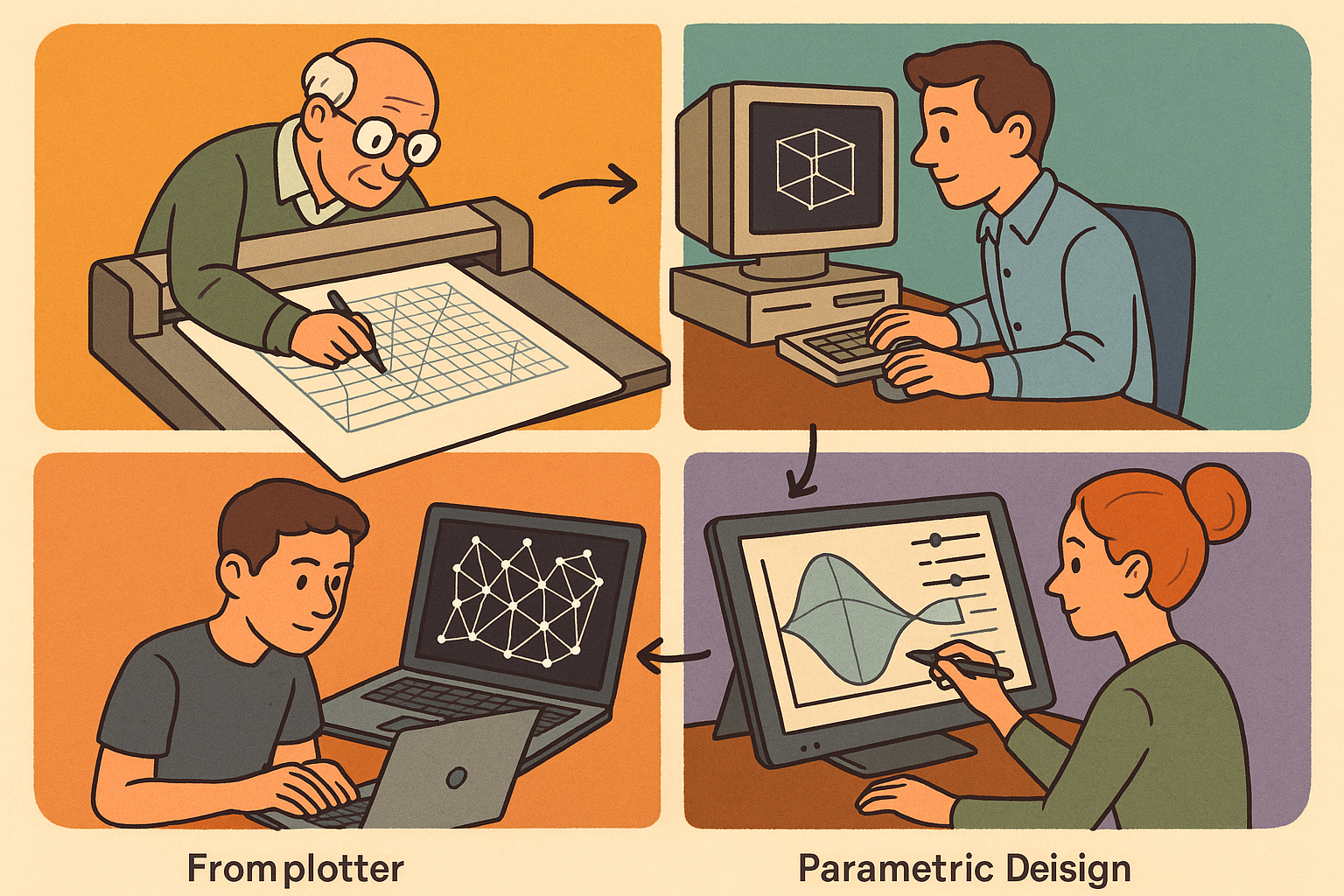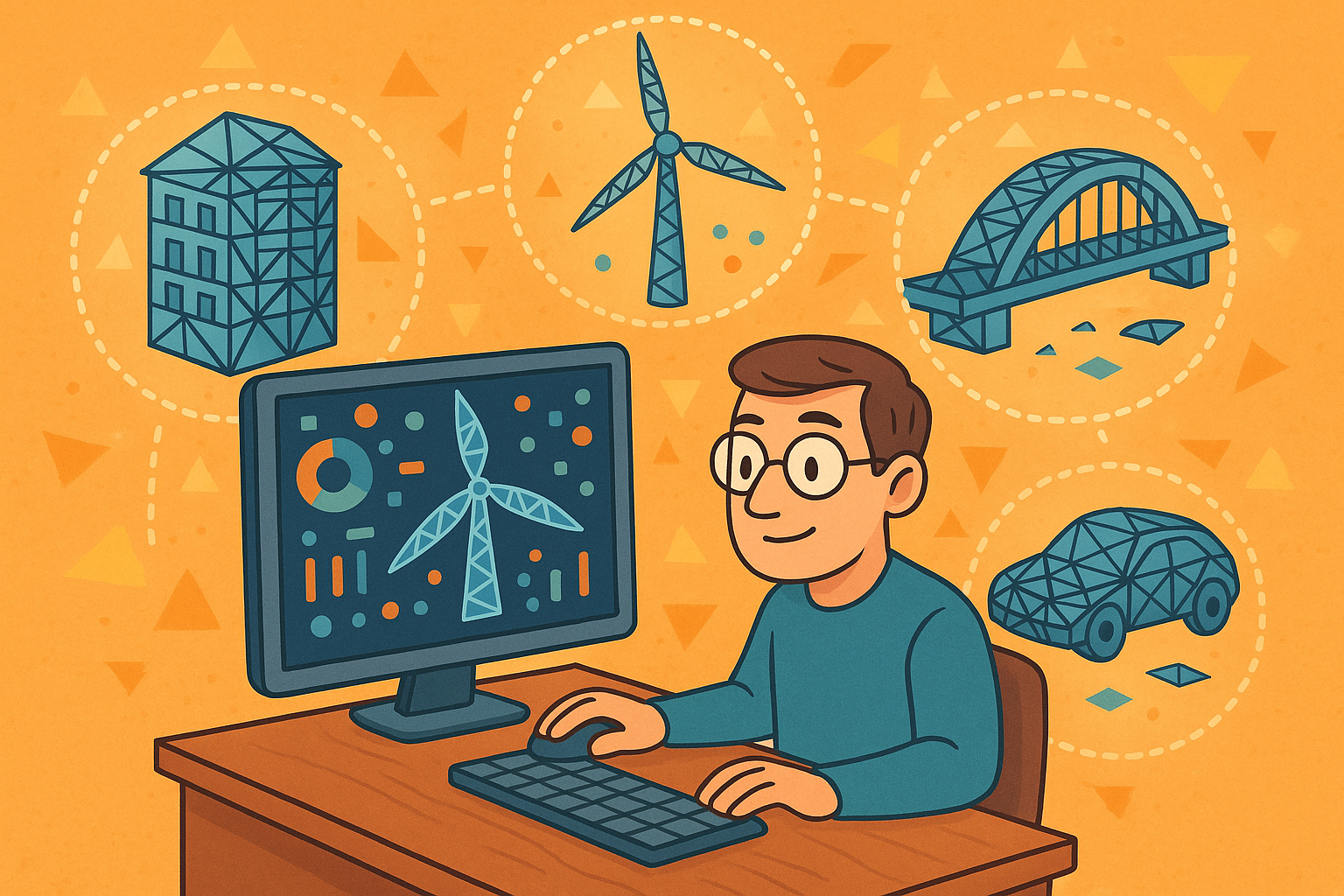Your Cart is Empty
Customer Testimonials
-
"Great customer service. The folks at Novedge were super helpful in navigating a somewhat complicated order including software upgrades and serial numbers in various stages of inactivity. They were friendly and helpful throughout the process.."
Ruben Ruckmark
"Quick & very helpful. We have been using Novedge for years and are very happy with their quick service when we need to make a purchase and excellent support resolving any issues."
Will Woodson
"Scott is the best. He reminds me about subscriptions dates, guides me in the correct direction for updates. He always responds promptly to me. He is literally the reason I continue to work with Novedge and will do so in the future."
Edward Mchugh
"Calvin Lok is “the man”. After my purchase of Sketchup 2021, he called me and provided step-by-step instructions to ease me through difficulties I was having with the setup of my new software."
Mike Borzage
Design Software History: Evolution of 3D Scanning: From Early Innovations to Integration with Design Software
September 07, 2024 6 min read


The Genesis of 3D Scanning Technology
3D scanning technology has undergone significant advancements since its inception, fundamentally altering the landscape of design and manufacturing. The journey began with early methods like photogrammetry and laser scanning, which laid the groundwork for today's sophisticated systems.
Early Innovations and Pioneers
Photogrammetry, one of the earliest 3D scanning methods, uses photographs to measure and calculate the positions of objects. This technique was initially popular among archaeologists and architects for its ability to capture detailed measurements without physical contact with the object.
The development of laser scanning marked a significant leap in 3D scanning technology. Laser scanners use laser beams to capture the precise dimensions of an object, creating a detailed digital representation. This method was quicker and offered higher accuracy compared to photogrammetry.
Several key figures played pivotal roles in the development of 3D scanning technology. Ivan Sutherland, often referred to as the father of computer graphics, made groundbreaking contributions to the field. His work on the Sketchpad in the 1960s demonstrated the potential of computer-aided design (CAD) and laid the foundation for future innovations.
Berthold K.P. Horn's work on shape from shading also significantly influenced 3D scanning technology. His research focused on understanding how light and shadows on an object's surface could be used to infer its shape, contributing to the development of algorithms that improved the accuracy of 3D scanning.
Technological Milestones
The development of laser scanners in the late 20th century saw their initial applications in industrial settings. These early laser scanners were bulky and expensive, limiting their use to large-scale projects like aerospace and automotive manufacturing, where precise measurements were crucial.
Structured light scanning emerged as another significant advancement in the field. This method involves projecting a series of light patterns onto an object and capturing the deformation of these patterns using cameras. The data collected is then processed to create a 3D model. Structured light scanning offered a non-intrusive way to capture detailed surface information and was particularly useful in fields like healthcare and heritage conservation.
The advent of increased computer processing power dramatically impacted 3D scanning technology. Faster processors and advanced algorithms allowed for real-time data processing and more complex calculations, making 3D scanning more accessible and versatile across various industries.
Integration with Design Software
Initial Software Integrations
The integration of 3D scanning with design software marked a significant milestone in the evolution of CAD systems. Early CAD software, primarily used for 2D drafting, began to incorporate 3D scan data, allowing designers to create more accurate and detailed models.
Companies like AutoDesk played a crucial role in this integration. AutoCAD, one of the most popular CAD software programs, started to include features that supported 3D scan data. This allowed engineers and designers to visualize and manipulate scanned objects within their design environments, significantly enhancing the accuracy and efficiency of the design process.
The introduction of software like Geomagic had a profound impact on reverse engineering. Geomagic allowed users to process 3D scan data and create accurate CAD models, facilitating the reconstruction of existing objects and the creation of new designs. This was particularly useful in industries where precise replication of parts and components was essential.
Enhancements in Workflow
The integration of 3D scanning with design software revolutionized the design process in various industries. In the automotive industry, for example, 3D scanning enabled engineers to capture detailed measurements of car parts and create accurate digital models for analysis and testing. This led to improvements in the design and manufacturing process, resulting in better quality and performance.
In the aerospace industry, companies like Boeing utilized 3D scanning to capture the precise dimensions of aircraft components. This allowed for more accurate simulations and analyses, ultimately leading to safer and more efficient designs. Similarly, in the consumer products industry, 3D scanning facilitated the creation of detailed models for product development and quality control.
- Automotive: Improved design and manufacturing process
- Aerospace: Enhanced simulation and analysis
- Consumer Products: Detailed models for product development and quality control
Advances in 3D Scanning Technology
Modern Scanning Technologies
The development of portable 3D scanners has significantly expanded the applications of 3D scanning technology. These handheld devices are lightweight and easy to use, allowing users to capture 3D data in various environments, from industrial settings to archaeological sites.
Advances in scanning resolution and speed have also played a crucial role in the evolution of 3D scanning technology. Modern scanners can capture even the finest details with remarkable accuracy, and the increased speed of data acquisition has made the scanning process more efficient, reducing the time required to create detailed 3D models.
The integration of AI and machine learning has further enhanced the quality of scan data. These technologies can automatically detect and correct errors in the scanned data, improving the accuracy and reliability of the models. Additionally, AI and machine learning algorithms can analyze large datasets, identifying patterns and trends that can inform the design process.
Software Development
The evolution of software tools for processing 3D scan data has been instrumental in advancing the capabilities of 3D scanning technology. Software like ReCap, Rhino, and Blender have developed features specifically designed to handle large and complex scan data, allowing designers to create detailed and accurate models.
As the complexity of 3D scan data increased, design software evolved to manage and process this data more efficiently. Advanced algorithms and improved processing capabilities enabled designers to work with larger datasets, creating more detailed and accurate models.
The introduction of cloud-based processing and collaboration tools has further transformed the design process. These tools allow users to process and analyze 3D scan data remotely, facilitating collaboration among teams located in different parts of the world. This has led to more efficient workflows and faster project completion times.
Future Directions and Impact on Design
Emerging Trends
The integration of 3D scanning with virtual and augmented reality (VR/AR) represents one of the most exciting emerging trends in the field. By combining 3D scan data with VR and AR technologies, designers can create immersive environments that allow for more intuitive and interactive design processes. This is particularly useful in fields like architecture and interior design, where users can visualize and explore virtual spaces before they are built.
3D scanning also plays a crucial role in additive manufacturing and 3D printing. By capturing precise measurements of objects, 3D scanners enable the creation of accurate digital models that can be used to produce physical replicas through 3D printing. This has revolutionized the manufacturing process, allowing for the production of complex parts and components with high precision.
Real-time scanning is another emerging trend that is influencing on-site construction and architecture. With real-time scanning, users can capture and analyze 3D data on the spot, enabling more accurate measurements and immediate feedback. This has the potential to improve the accuracy and efficiency of construction projects, reducing errors and costs.
Long-Term Implications
The continuous evolution of 3D scanning and design software integration is likely to have profound long-term implications for various industries. In healthcare, for example, 3D scanning can be used to create detailed models of anatomical structures, aiding in surgical planning and the development of customized implants.
In the entertainment industry, 3D scanning is used to create realistic digital models for movies, video games, and virtual reality experiences. This technology allows for the creation of lifelike characters and environments, enhancing the overall user experience.
Heritage conservation is another field that stands to benefit from advancements in 3D scanning technology. By capturing detailed scans of historical artifacts and sites, preservationists can create accurate records and replicas, ensuring that these cultural treasures are preserved for future generations.
The importance of continuous innovation and interdisciplinary collaboration cannot be overstated. As 3D scanning technology continues to evolve, it will be essential for experts from various fields to work together, sharing knowledge and expertise to drive further advancements and unlock new possibilities.
By understanding the historical context and technological advancements of 3D scanning and its integration with design software, we gain insight into how these tools have revolutionized various industries and continue to drive future innovations.
Also in Design News

Design Software History: From Plotters to Procedural Intent: A Technical History of Generative and Parametric Design Software
January 04, 2026 13 min read
Read More
Semantic Meshes: Enabling Analytics-Ready Geometry for Digital Twins
January 04, 2026 12 min read
Read MoreSubscribe
Sign up to get the latest on sales, new releases and more …



